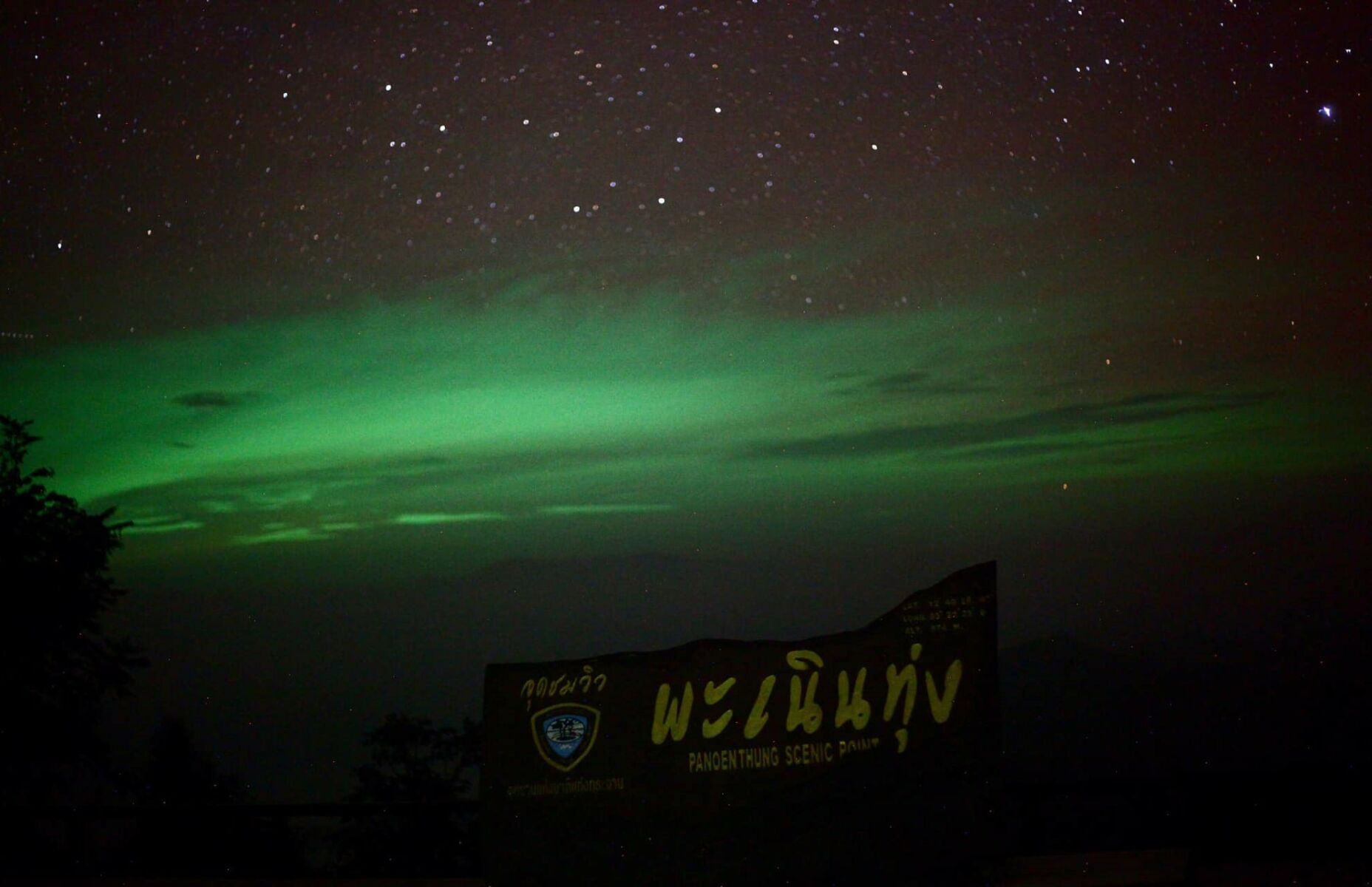Green glow or green go? Viral lights stir aurora confusion above Thailand’s national park

Images of a bright green light above Kaeng Krachan National Park in the southern province of Phetchaburi went viral on Thai social media. Netizens said it was the first-ever aurora display in Thailand while one scientist dampened spirits somewhat saying it was just the green fishing light.
Facebook page Khao Panoentung Scenic Point at Kaeng Krachan National Park in Phetchaburi shared a picture of the green light with the caption…
“An unidentified green light comes at the right time to welcome visitors during the opening season.”
Many Thai netizens found the green light to be an amazing phenomenon, like the northern lights at the geographic poles, while others questioned whether it was photo editing.
The Facebook page administrator reported that there was no photo editing involved. The green light appeared from 9pm to 11pm on Friday, November 3.
The administrator believes that the green light did not come from fishing lights or fishing boats because the scenic spot is 60 kilometres from the Gulf of Thailand, 70 kilometres from the Andaman coast and 1,200 metres above sea level.
Confirmation from Facebook led many netizens to believe that the light was the aurora borealis, which is normally seen in the Nordic countries of Iceland, Norway, Sweden and Finland, which lie within or near the Arctic Circle. You could also look for them in Russia, Alaska, and Canada’s northwest territories.
Jadesada Denduangboriphat, a lecturer at the Department of Biology, Faculty of Science, Chulalongkorn University, clarified that the green light could not be the aurora because the aurora is caused by the solar wind and only occurs in countries at the geographical poles. This made the aurora impossible in Thailand.
Jadesada added that he could not identify the source of the light but believed it might have come from fishing boats on the Myanmar border.
The Department of National Parks, Wildlife and Plant Conservation reported that the green light over the national park had occurred several times before. It usually occurs once or twice a year at the end of the rainy season and the beginning of the cold season due to reflection from light sources and clouds.
However, the department could not say whether the light came from natural or human-made sources.
Follow more of The Thaiger’s latest stories on our new Facebook page HERE.
Latest Thailand News
Follow The Thaiger on Google News:


























